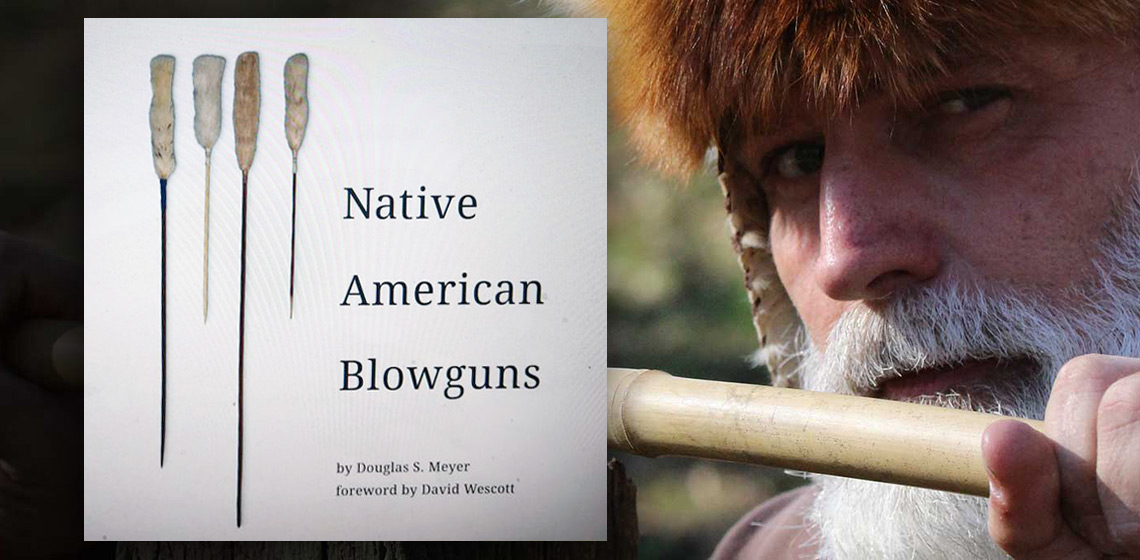The content is published under a Creative Commons Attribution Non-Commercial 4.0 License.
Unreviewed Mixed Matters Article:
Book Review: Native American Blowguns by Douglas S. Meyer

Honestly, before I got to know Douglas S. Meyer, I had no idea that blowguns existed in North America. They are well known in South America, particularly for being used with poisoned darts, but the ones from the Southeast of the United States were completely new to me. Meyer is a very experienced expert on primitive skills who studied this weapon for more than 30 years. Eight years ago, he published an article about the Native American blowgun on EXARC: https://exarc.net/issue-2013-3/at/hunting-cane-traditional-cherokee-blo…
What really surprised me is that there are no archaeological finds of blowguns or darts. But with his 30 years long of research, Meyer collected enough traces in the Native languages and traditions to prove their existence. Usually experimental archaeology starts with artefacts, but in this case we only have the ethnographic descriptions that are dating back little more than 100 years (for example Frank Speck “The Cane Blowgun in Catawba and South-eastern Ethnology”) and the still-existing tradition of building blowguns with modern tools among some of the South-eastern tribes like such as the Cherokee, the Catawba and the Choctaw. The utilized organic materials for blowguns and darts are highly fragile, deteriorating quickly in the humid climate of the South-east of the United States, so not even a tiny fragment could be clearly identified as a part of a blowgun. Most likely the blowgun originally was a seasonal weapon that was disposed of after use.
Based on the extremely rare recording of blowguns in ethnographic literature and the few tribes that are still producing blowguns, the book starts with a short insight into the origin and the history. Meyer explains the characteristics of the South-eastern Native American blowguns, the differences and similarities in shape and material between the various tribes.
The following six chapters, the biggest part of the book, are about how to build and use a blowgun, the darts and, in order to be complete, the various types of quivers. This is a book for doers, written in a very understandable language, completed with plenty of detailed photographs of the entire building process. It provides one with all the necessary information to be able to make blowgun equipment. The few tribes that are still building blowguns are using modern tools; it is typical for all human beings to quickly adapt to modern tools that allow easier or faster manufacture, so modern variations in manufacture are a natural development. The author shows many different options in his use of tools, sharing his thirty years of experience and his studies from the tribes that are keeping their tradition alive. Most interesting for experimental archaeologists is that Douglas S. Meyer has a life-long experience in working with primitive technologies and he dedicates a whole chapter of his book to the exclusive use of primitive tools for the manufacture process. His book can be considered the missing link between archaeology, ethnography, bushcraft and primitive technology in terms of North American blowguns. It is the first book that is completely dedicated to the history of the Native American blowguns, their use and their manufacture.
Book information:
Meyer, Douglas S. 2019. Native American Blowguns. Dropstone Press. 242 pages with 122 coloured photos. ISBN 978-1-947281-25-7
Main Photo: https://www.internationalbushcraftevent.com/team-member/douglas-s-meyer/
Country
- USA

